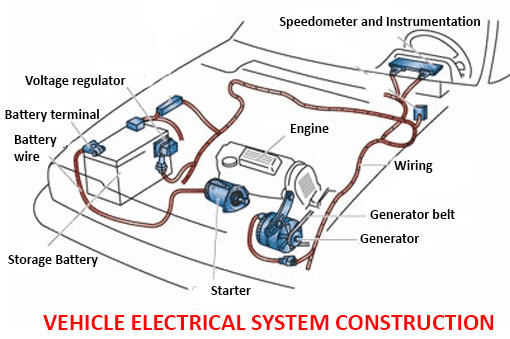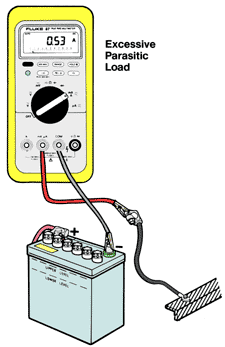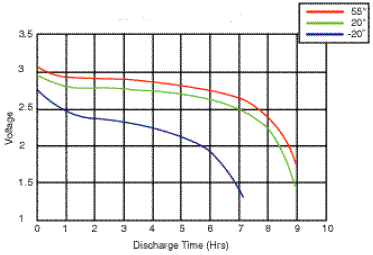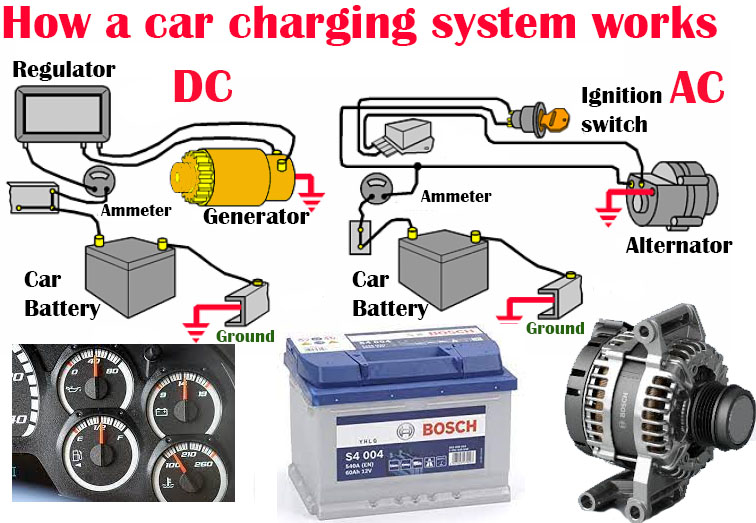A car battery can self-discharge at a rate of 5-15% per month even with the negative cable disconnected. However, leaving the battery connected when not in use may lead to a higher drain rate of nearly 20% per week due to parasitic draw from the car’s electrical systems. Disconnecting the negative cable can be a useful strategy for long-term storage to minimize battery drain.
I’m thrilled to dive into a topic that’s close to my heart and, quite literally, powers our lives – car batteries. Now, I’ve spent a good chunk of my life tinkering with these energy powerhouses, and there’s one question that keeps popping up – “Can a battery drain with the negative cable disconnected?”
Well, let me tell you, it’s not as straightforward as it sounds. You see, a car battery can self-discharge at a rate of 5-15% per month even with the negative cable disconnected. Surprised? I was too, the first time I discovered this. But it’s true, and it’s all down to the inherent chemistry of the battery.
On the flip side, if you leave the battery connected when it’s not in use, you might see a higher drain rate of nearly 20% per week. This is due to something called a ‘parasitic draw’ from the car’s electrical systems. Sounds like something out of a sci-fi movie, doesn’t it? But it’s a very real phenomenon in the world of car batteries.
So, if you’re planning on storing your car for a while, disconnecting the negative cable can be a useful strategy to minimize battery drain. It’s a little trick I’ve picked up over the years, and it’s saved me more times than I can count.
Stick around as we delve deeper into this fascinating topic. Trust me; it’s going to be electrifying!
Understanding Car Batteries
Ah, car batteries! These little boxes of power are the unsung heroes of our vehicles. They start our engines, power our radios, and keep our lights on. But what exactly goes on inside these mysterious boxes? Let’s dive in and find out.
How do Car Batteries Work?
A car battery, also known as a lead-acid battery, is a little like a mini power plant. It operates on a simple chemical reaction. Inside the battery, there are lead plates immersed in a mixture of sulfuric acid and water. This concoction causes a reaction that produces electrons. And voila, you’ve got electricity!
When you turn the ignition key, the battery delivers a burst of energy to the starter motor. Once the car is running, the alternator takes over and recharges the battery. It’s a beautiful cycle of energy, isn’t it?

Importance of the Negative Cable in a Car Battery
Now, let’s talk about the unsung hero of the car battery – the negative cable. This little guy might not seem like much, but trust me, he’s crucial to the operation of your car.
The negative cable, also known as the ground cable, connects the battery to the car’s chassis, creating a complete electrical circuit. Without this connection, the electrical current wouldn’t have a path to follow, and your car simply wouldn’t start.
But the negative cable does more than just complete the circuit. It also helps to regulate the electrical flow and prevent damage to sensitive components. Think of it as the bouncer at the club, keeping the rowdy electrons in check.
So, next time you’re under the hood of your car, give a little nod to the negative cable. It’s doing more work than you might think!
In the next section, we’ll dive into the heart of our topic – can a battery drain with the negative cable disconnect? Stick around, it’s going to be a shocking revelation!

Can A Battery Drain With A Negative Cable Disconnected?
Now, let’s get to the heart of the matter. Can a battery drain with the negative cable disconnect? The short answer is yes, but the long answer is a bit more complicated. Let’s dive into the nitty-gritty details.
the Possibility and Reasons
You see, a car battery is a bit like a reservoir. It stores energy and releases it when needed. But just like a reservoir, if there’s a leak, the stored energy (or water, in the case of the reservoir) can slowly drain away. This is known as self-discharge, and it happens even if the negative cable is disconnected.
Now, you might be wondering, “Why does this happen?” Well, it’s all down to the chemical reactions happening inside the battery. Over time, these reactions can cause the battery to lose charge, even when it’s not in use.
According to a study by Battery University, a car battery can self-discharge at a rate of 5-15% per month with the negative terminal disconnected. However, leaving the battery connected when not in use may lead to a higher drain rate of nearly 20% per week due to parasitic draw from the car’s electrical systems.

So, while disconnecting the negative cable can slow down the rate of discharge, it doesn’t completely stop it. It’s a bit like putting a band-aid on a leaky pipe – it might slow down the leak, but it won’t stop it entirely.
In the next section, we’ll delve deeper into the role of the negative cable and why it’s so important in preventing battery drain. So stick around, because things are about to get electrifying!
How Does the Negative Cable Work?
Alright, folks, it’s time to roll up our sleeves and get our hands dirty. We’re going to dive into the world of negative cables and their role in the battery system. Trust me, it’s more exciting than it sounds!
the Role of the Negative Cable in the Battery System
The negative cable, also known as the ground cable, is the unsung hero of your car’s electrical system. It might not get the spotlight like the positive cable, but it plays a crucial role in the smooth operation of your vehicle.
You see, the negative cable connects the battery to the car’s chassis, creating a complete electrical circuit. Without this connection, the electrical current wouldn’t have a path to follow, and your car simply wouldn’t start. It’s like trying to run a marathon with one leg – it’s just not going to work!
But the negative cable does more than just complete the circuit. It also helps to regulate the electrical flow and prevent damage to sensitive components. Think of it as the bouncer at the club, keeping the rowdy electrons in check.
So, the next time you’re under the hood of your car, give a little nod to the negative cable. It’s doing more work than you might think!
In the next section, we’ll delve into the reasons why a battery might drain even with the negative cable disconnected. So stick around, because things are about to get electrifying!
Why Does the Battery Drain with The Negative Cable Disconnected?
Now that we’ve got a handle on how the negative cable works, let’s tackle the million-dollar question – why does the battery drain even with the negative cable disconnected? Buckle up, folks, because we’re about to go on a deep dive into the world of parasitic draw and battery wear and damage.
Discussion on Parasitic Draw
First up, let’s talk about the parasitic draw. Now, I know it sounds like something out of a horror movie, but it’s actually a common issue in the world of car batteries.
Parasitic draw refers to the electrical load that continues to operate after the ignition key has been turned off. This could be anything from your car’s clock and radio presets to the security system and computers. These devices can slowly drain your battery, like a parasite feeding off a host. Creepy, right?
According to a study by Battery University, a car battery can self-discharge at a rate of 5-15% per month with the negative terminal disconnected. However, leaving the battery connected when not in use may lead to a higher drain rate of nearly 20% per week due to parasitic draw from the car’s electrical systems.

Wear Out/Damage
Next up, let’s talk about wear and tear. Just like anything else, batteries can wear out over time. The chemical reactions that produce electricity can also cause the internal components of the battery to degrade. This can lead to a decrease in the battery’s capacity and, ultimately, a shorter lifespan.
Damage can also be a factor. If the battery has been physically damaged, it can lead to a faster rate of discharge. This is why it’s so important to handle your battery with care and ensure it’s properly installed and secured in your vehicle.
In the next section, we’ll delve into why your battery might drain even when it’s not in use. So stick around, because things are about to get electrifying!
Why Does My Battery Drain Even When Not in Use?
Alright, folks, we’ve tackled the role of the negative cable and the reasons for battery drain. But what about when your car is just sitting there, not being used? Why does the battery drain then? Well, buckle up, because we’re about to dive into the world of temperature effects, car settings, and half-charged battery issues.
Unusual Temperature Effects
First up, let’s talk about temperature. You might not think it, but temperature can have a big impact on your battery. In fact, extreme temperatures can cause your battery to drain faster than usual.
Cold temperatures can slow down the chemical reactions inside the battery, reducing its capacity. On the flip side, hot temperatures can speed up these reactions, causing the battery to discharge faster. It’s a bit like Goldilocks and the Three Bears – batteries prefer temperatures that are just right!

Car Settings Impact
Next up, let’s talk about car settings. You might not realize it, but some of your car’s settings can drain your battery even when it’s not in use. This includes things like your car’s clock, radio presets, and security system. These devices continue to draw power from the battery even when the car is off, leading to a slow but steady drain on your battery.
Half-Charged Battery Issues
Finally, let’s talk about half-charged batteries. Now, you might think that a half-charged battery is better than a dead battery, right? Well, not exactly. You see, a battery that’s left half-charged for an extended period can suffer from a condition called sulfation. This can lead to a decrease in the battery’s capacity and, ultimately, a shorter lifespan.
So, if you’re planning on storing your car for a while, make sure to fully charge the battery first. It’s a little trick I’ve picked up over the years, and it’s saved me more times than I can count!
In the next section, we’ll delve into the best ways to stop battery drain. So stick around, because things are about to get electrifying!
Best Ways to Stop Battery Drain
Alright, folks, we’ve made it to the home stretch. We’ve talked about why batteries drain, even with the negative cable disconnected, and when not in use. Now, let’s talk about how to stop that pesky battery drain. Buckle up, because we’re about to dive into the world of battery maintenance.
Tips on Charging the Battery Fully
First up, let’s talk about charging. Now, you might think that charging your battery is as simple as plugging it in and waiting. But there’s a bit more to it than that. You see, to get the most out of your battery, you need to charge it fully. This means charging it until it reaches its maximum capacity, not just until it’s half-full. Remember, a half-charged battery can lead to sulfation and a shorter lifespan.

Importance of Disconnecting the Negative Cable
Next up, let’s talk about the negative cable. As we’ve discussed, disconnecting the negative cable can help to slow down the rate of battery drain. But it’s also important for another reason – safety. Disconnecting the negative cable can prevent accidental short circuits when working on your car. So, it’s a good habit to get into, not just for your battery’s health, but for your own safety too!
Advice on Refilling the Electrolytes
Now, let’s talk about electrolytes. No, I’m not talking about the stuff in your sports drinks. I’m talking about the sulfuric acid and water mixture in your battery. Over time, this mixture can evaporate, leading to a decrease in your battery’s capacity. Refilling the electrolytes can help to prolong your battery’s lifespan and prevent premature drain.
Importance of Regular Maintenance
Finally, let’s talk about maintenance. Just like your car, your battery needs regular check-ups to stay in tip-top shape. This includes cleaning the terminals, checking the electrolyte levels, and testing the battery’s capacity. Regular maintenance can help to catch any potential issues early and keep your battery running smoothly.
So, there you have it, folks. The best ways to stop battery drain. Remember, a little bit of maintenance can go a long way in keeping your battery healthy and your car running smoothly. In the next section, we’ll tackle some frequently asked questions about batteries. So stick around, because things are about to get electrifying!
Conclusion
Well, folks, we’ve been on quite a journey, haven’t we? We’ve dived deep into the world of car batteries, explored the role of the negative cable, and even tackled the mystery of battery drain. We’ve debunked myths, busted jargon, and hopefully, shed some light on this electrifying topic.
Remember, your car’s battery is more than just a box of power. It’s a complex piece of machinery that requires care, attention, and a little bit of love. By understanding how it works and how to maintain it, you can prolong its lifespan and keep your car running smoothly.
So, the next time you’re under the hood of your car, give a little nod to your battery and the negative cable. They’re doing more work than you might think!
And remember, knowledge is power – and in this case, it’s also the key to keeping your battery powered up and ready to go. So, keep learning, keep asking questions, and keep exploring the fascinating world of car batteries.
Now that we’ve covered the ins and outs of car battery drain and the role of the negative cable, you’re well on your way to becoming a battery guru. But remember, there’s always more to learn in the electrifying world of car batteries.
For instance, have you ever wondered about the process of connecting two 12V batteries to make 24V? Or perhaps you’re curious about how to reset a key fob after changing the battery? These are just a few of the fascinating topics we cover on our blog.
And let’s not forget about the ever-important topic of battery maintenance. From understanding why your car battery light might be on after replacing the battery, to figuring out how much a battery core charge at Walmart is, we’ve got you covered.
We also delve into more specific issues, like how a low car battery can affect your key fob, and how long you should disconnect your battery to reset your car’s computer.
So, keep exploring, keep learning, and remember – knowledge is power, especially when it comes to car batteries. Until next time, stay charged and keep those engines running!
FAQ
What happens if I remove the positive terminal first?
Disconnecting the positive terminal first can lead to a risk of sparking. If the wrench used to remove the positive terminal comes into contact with any part of the vehicle’s body, it can create a short circuit, which can cause a spark. This spark has the potential to ignite any flammable substances, such as the gases emitted by the battery.
What happens if you connect car battery in wrong order?
Connecting a car battery in the wrong order can cause severe damage. If the positive and negative terminals are connected incorrectly, it can lead to a reverse polarity. This can cause a surge in electrical power, which can damage electrical components, including the car’s fuses, alternator, and computer systems.
Why should you disconnect the negative terminal first?
Disconnecting the negative terminal first is a safety measure. The negative terminal is connected to the car’s body, and the body is used as a ground. If you disconnect the positive terminal first and your tool touches any metal part of the car, it could create a short circuit, leading to a spark. By disconnecting the negative terminal first, you eliminate this risk.
What is the purpose of the negative cable in a car battery?
The negative cable in a car battery serves as the ground for the electrical system. It completes the circuit by connecting the power source to the vehicle’s body. This allows the electrical current to flow through the system, powering the various electrical components in the vehicle.
How does temperature affect a car battery?
Temperature can significantly impact a car battery’s performance. Cold temperatures can slow down the chemical reactions inside the battery, reducing its capacity and power output. On the other hand, high temperatures can speed up these reactions, leading to faster battery wear and potential damage.
What is a parasitic draw in a car battery?
A parasitic draw refers to any electrical device or component that continues to use power from the battery even when the vehicle is turned off. These could include alarm systems, radios, and even faulty wiring. Over time, these draws can deplete the battery, especially if the vehicle is not regularly used.
How can I prevent my car battery from draining?
To prevent your car battery from draining, consider using a trickle charger or battery maintainer for long periods of inactivity. Avoid short journeys that don’t allow the battery to fully recharge. Regularly drive your car for extended periods to keep the battery charged. If you have more than one vehicle, alternate between them to keep both batteries in good condition.
What are the consequences of disconnecting the negative cable of a car battery?
Disconnecting the negative cable of a car battery can lead to several consequences. It can cause the car’s computer to reset, losing saved settings. It can also interrupt the power supply to the vehicle’s electrical components. However, disconnecting the negative cable can also prevent battery drain during periods of inactivity.
